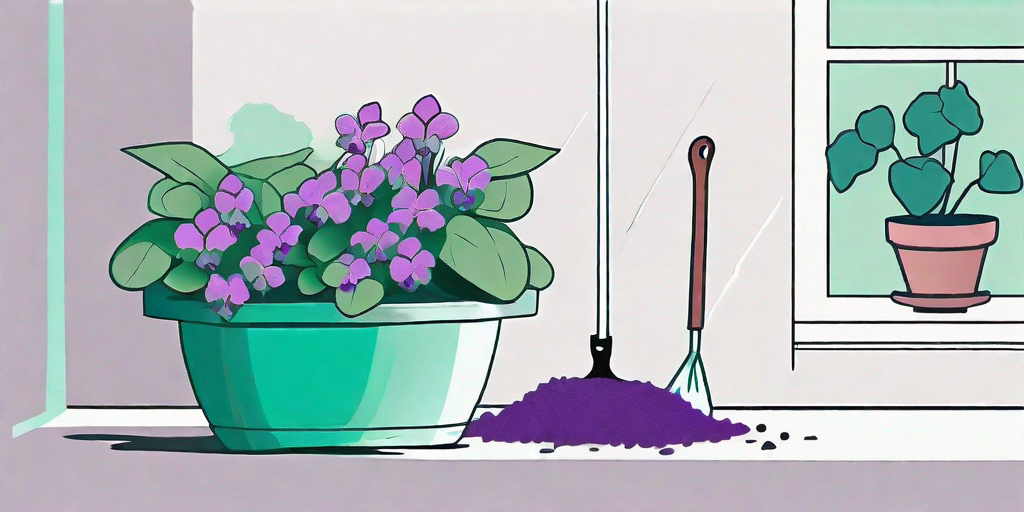
Persian Violets, also known as Exacum affine, are a sight to behold. With their rich, royal blue or purple flowers and lush green foliage, they can turn any dull corner into a vibrant spectacle. But how do you grow these beauties? And how do you ensure they thrive? Well, buckle up, plant enthusiasts, because we're about to embark on a green-thumbed adventure!
The Origin of Persian Violets
Let's start our journey by delving into the roots of these plants (pun absolutely intended). Persian Violets, despite their name, are not native to Persia (now Iran). They actually hail from the exotic islands of Yemen and Socotra. This little bit of trivia might just win you a bet at your next garden club meeting.
These plants belong to the Gentianaceae family, which is known for its ornamental plants. So, it's no surprise that Persian Violets are such show-stoppers. They've got the good genes, after all.
Characteristics of Persian Violets
Now that we've covered the 'where', let's move on to the 'what'. What makes Persian Violets so special? Well, their beauty lies in their simplicity. These compact plants grow up to 12 inches in height and width, making them perfect for small spaces.
Their flowers are small yet striking, with four to five petals in shades of blue, purple, or white. The center of each flower is adorned with bright yellow stamens, creating a beautiful contrast. And let's not forget the leaves - dark green, glossy, and oval-shaped. They're the perfect backdrop for the vibrant flowers.
But the pièce de résistance? The fragrance. Persian Violets emit a sweet, delicate scent that can fill a room. It's like having a natural air freshener that's also a visual treat.
How to Grow Persian Violets
Choosing the Right Spot
Like all plants, Persian Violets have their preferences when it comes to their living conditions. They love bright, indirect light. So, a spot near a north or east-facing window would be ideal. But remember, they don't like direct sunlight. It's like they're saying, "We love the sun, but we don't want to get a tan."
They also prefer a humid environment. If your home is dry, consider using a humidifier or placing the plant on a tray filled with pebbles and water. It's all about creating that tropical island vibe.
Planting and Watering
When it comes to planting, Persian Violets aren't too fussy. They're happy in any well-draining potting mix. But if you want to go the extra mile, you can use a mix of peat moss, perlite, and vermiculite. It's like giving them a five-star accommodation.
Watering is where things get a bit tricky. These plants like their soil to be consistently moist, but not waterlogged. Overwatering can lead to root rot, which is a big no-no. So, water them when the top inch of the soil feels dry to the touch. And remember, they prefer room temperature water. Cold water is a shock to their system, like jumping into a freezing pool.
Caring for Persian Violets
Feeding and Pruning
Persian Violets are not heavy feeders. A balanced, water-soluble fertilizer applied every two weeks during the growing season should suffice. It's like giving them a balanced diet to keep them healthy and blooming.
Pruning is essential to maintain the compact shape of these plants. Regularly remove dead flowers and leaves to encourage new growth. It's like giving them a haircut to keep them looking their best.
Dealing with Pests and Diseases
Unfortunately, Persian Violets can be prone to pests like aphids and spider mites. Regularly inspect your plants and use an insecticidal soap at the first sign of trouble. It's like playing detective and protector at the same time.
As for diseases, root rot due to overwatering is the most common issue. So, remember the watering rules we discussed earlier. They're not just suggestions, they're essential for your plant's survival.
Frequently Asked Questions
- Can Persian Violets be grown from seeds?
Yes, they can. However, it's a slow process and requires patience. So, if you're looking for instant gratification, it's better to buy a mature plant.
- Are Persian Violets toxic to pets?
Good news for pet owners - Persian Violets are non-toxic to cats and dogs. But it's always a good idea to keep plants out of reach of curious pets.
- How often do Persian Violets bloom?
With proper care, Persian Violets can bloom several times a year. Each bloom lasts for about six weeks, giving you plenty of time to enjoy their beauty.
So there you have it - a comprehensive guide to growing and caring for Persian Violets. With a little bit of care and a lot of love, you can turn these stunning plants into the stars of your indoor garden. Happy planting!















